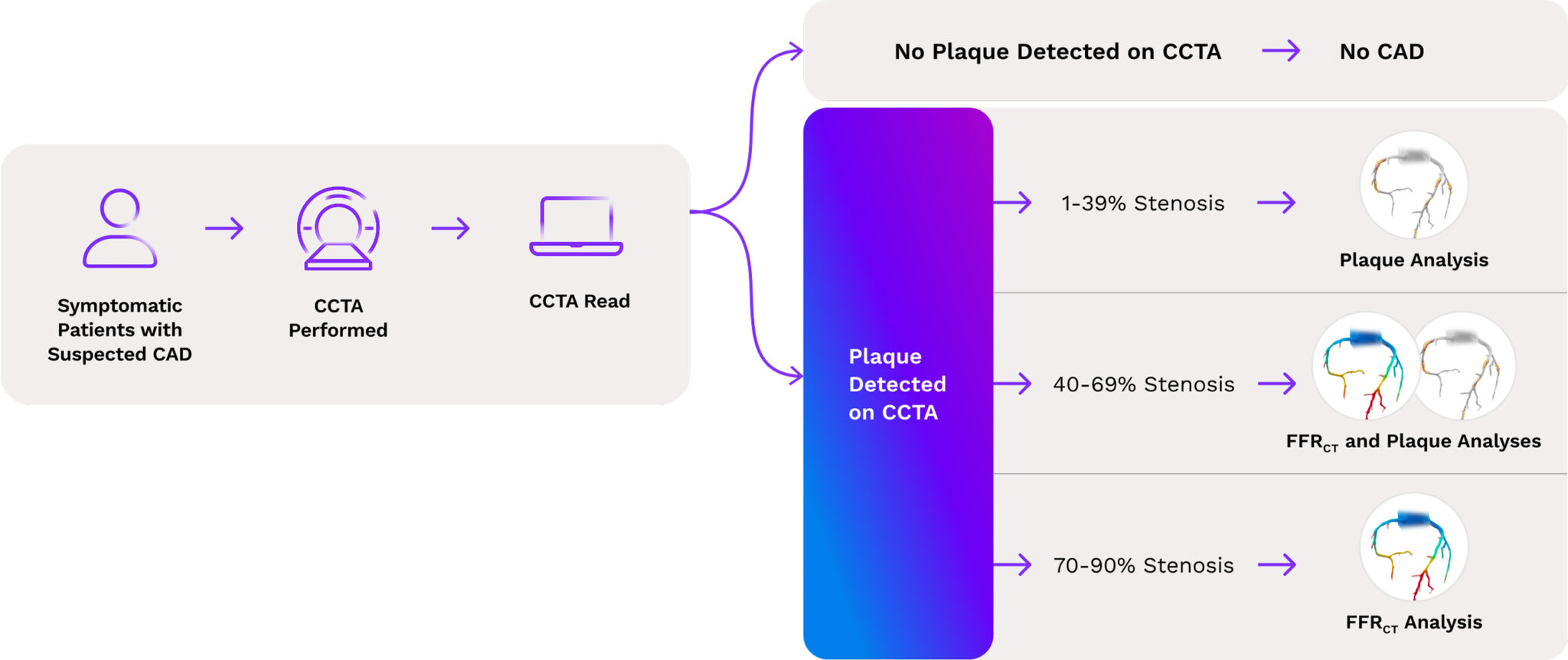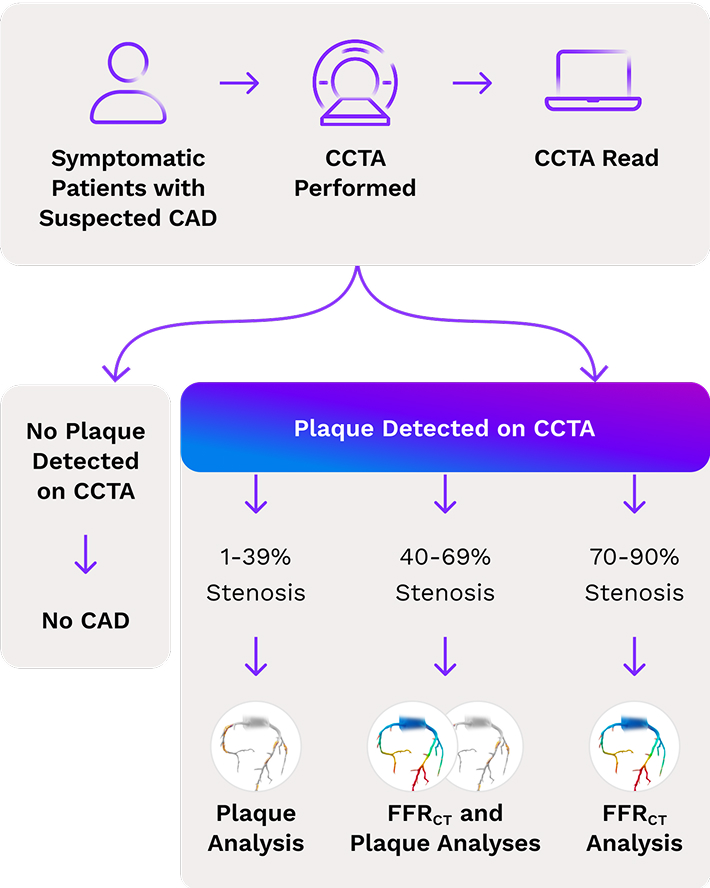Reimbursement
Resources
Heartflow is dedicated to ensuring broad access to our comprehensive CAD management platform. These reimbursement resources are intended to support healthcare providers in navigating the reimbursement landscape for the Heartflow One platform, including FFRCT Analysis and Plaque Analysis.
Heartflow has been adopted by more than 1,400 institutions and we continue to expand our commercial presence to make this cutting-edge solution more broadly available to a diverse patient population.
Hospital Outpatient: OPPS Final Rule
| Product | CY 2024 Final Rule | CY 2025 Final Rule | % Change |
|---|---|---|---|
| CCTA | $175 APC 5571 |
$357 APC 5572 |
+104% |
| FFRCT APC 5724 | $997 | $1,017 | +2% |
| Plaque APC 1151 | $950 | $950 | — |
Physician Office: PFS Final Rule
| Product | CY 2024 Final Rule | CY 2025 Final Rule | % Change |
|---|---|---|---|
| CCTA | $285 | $318 | +12% |
| FFRCT APC 5724 | $888 | $839 | -5.8% |
| Plaque | Set by MACs | Set by MACs | — |
Patient Population
An appropriate patient population consists of patients with symptomatic acute or stable chest pain and observed coronary plaque on a CCTA, as shown in the graphic below.


CPT Codes
When ordering a CCTA for symptomatic patients, include Plaque Analysis and FFRCT Analysis codes for CAD.
*Category I Code Update: On January 1, 2026, 0623T-0626T will sunset and the AI-CPA service will convert to a Category I code.
| CCTA CPT Code |
FFRCT CPT Code |
Plaque CPT Code* |
|---|---|---|
| 75574 | 75580 | 0623T (global) 0624T (technical) 0625T (technical) O626T (professional) |
Plaque Analysis Reimbursement
Commercial and Medicare Coverage
Plaque Analysis is covered by the largest commercial insurers in the nation. This includes positive coverage from:
- Medicare1
- UnitedHealthcare
- Cigna
- Humana
Medical Necessity Guidelines
The patient is eligible for CCTA, and;
The patient presents with acute or stable chest pain and is at intermediate risk for CAD or has evidence of CAD-RADS level 1, 2, or 3 disease (>1% and <70% stenosis) on their CCTA and;
The patient is negative or inconclusive for acute coronary syndrome (ACS)
FFRCT Analysis Reimbursement
As of January 1, 2024, the American Medical Association (AMA) has established a Category I CPT code for the FFRCT Analysis. This update reinforces the CCTA + FFRCT pathway as the directed approach in the AHA Chest Pain Guidelines, with coverage for 99.5% of lives in the nation.